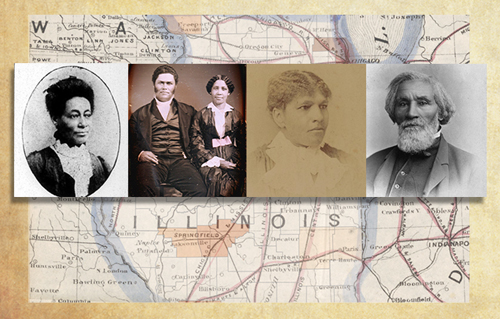Faculty Spotlight
Kate Masur’s Digital Black Organizing in Pre-Civil War Illinois
Not all faculty research these days takes the form of books and articles. Both the change in our media landscape and the pressing concerns of the present moment have led colleagues to turn increasingly to public facing forms of history such as articles in popular publications, blogs, editorials in major newspapers and projects in digital history/humanities to bring their research to audiences outside of academia.

While doing research on her most recent book Until Justice Be Done (W.W. Norton, 2021), Kate Masur became aware of Penn State’s Colored Conventions Project, an initiative to document and make accessible evidence of nationwide Black political organizing over many decades of the nineteenth century. Among the project’s many online “exhibits,” Masur immediately spotted the absence of material on Ilionois, where a statewide convention of Black citizens was held in 1853 to in response to a repressive law passed by the state legislature that year.
Masur first put members of an undergraduate seminar to work collecting evidence about the 1853 convention, then raised funds to expand the project into a digital exhibit in the summers of 2020 and 2021. Her team included history graduate students Hope McCaffrey, Emiliano Aguilar, Mikala Stokes and Marquis Taylor as well as undergraduate researchers, and was supported by Northwestern’s Digital Humanities Librarian Josh Honn and director of WCAS’s Media & Design Studio Matt Taylor.
The result is now available online on the site of Penn State’s Colored Conventions Project as a web exhibit, Black Organizing in Pre-Civil War Illinois: Creating Community, Demanding Justice. It includes background material on Black life, community building, and protest movements in antebellum Illinois and documents the identities and families of twenty-five Black Illinoisans who took part in these activities.
“We wear many different hats as historians,” says Masur, “and we can speak to many different constituencies.” This project, involving many collaborators, was a departure for her from the solitary work typical of the profession. It challenged the team, she says, to make the material as accessible as possible to multiple audiences. One such audience is made up of teachers at Evanston Township High School with whom she has been meeting and who are creating lesson plans that draw on the resources she and her team have made available.
